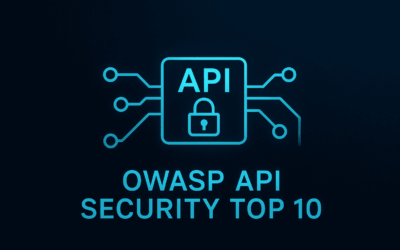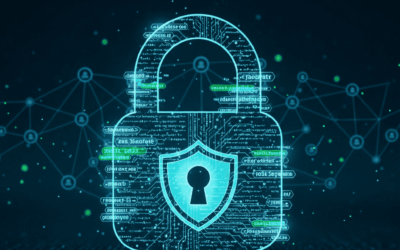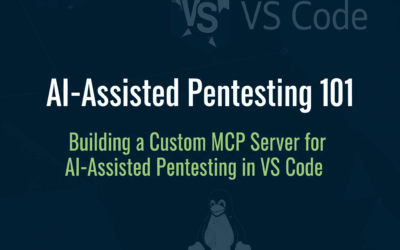🚀 Understanding IPv4: A Comprehensive Overview
Curious about how devices communicate on the internet? In this post, I dive into the fundamentals of IPv4 addresses — the backbone of modern networking. From public and multicast addresses to loopback and subnetting concepts, you’ll gain a solid understanding of how IPv4 works and why it’s essential knowledge for IT professionals.
Let’s explore the world of IPv4! 🌐
Introduction
In the world of computer networking, understanding IP addresses is crucial. Every device connected to the internet needs an address to communicate, just like how homes have street addresses. In this post, we’ll dive into IPv4 (Internet Protocol version 4) — the most widely used IP addressing system.
What is an IP Address?
An Internet Protocol (IP) address is a unique numerical label assigned to each device connected to a network. It serves two main purposes: identifying the host and providing the location.
📜 Brief History of IPv4
The concept of IP addresses 📡 was introduced during the early stages of the internet 🌐, which started as ARPANET in the 1960s. IPv4 was established in 1981 under RFC 791. It uses a 32-bit address format, allowing approximately 4.3 billion unique addresses.
IPv4 Development Timeline
───────────────────────────────────────────────────────
1981: IPv4 Officially Standardized (RFC 791)
│
├── 1983: ARPANET Adopts IPv4
│
├── 1990s: Internet Boom (IPv4 Dominance)
│
├── 1999: IPv6 Introduced (RFC 2460)
│
└── 2010s+: IPv4 Exhaustion & IPv6 Adoption Growth
│
├── 2011: Last IPv4 Blocks Allocated (IANA)
│
└── Present: Dual-Stack (IPv4 + IPv6) Transition
Understanding RFC1918 and Its Relevance
RFC 1918 defines private IP address ranges used for local networks 🏢. These addresses are not accessible on the public internet 🚫.
Private IPv4 Address Ranges:
The Internet Assigned Numbers Authority (IANA) has reserved the following three blocks of the IP address space for private internets:
10.0.0.0 - 10.255.255.255 (10/8 prefix)
172.16.0.0 - 172.31.255.255 (172.16/12 prefix)
192.168.0.0 - 192.168.255.255 (192.168/16 prefix)
Public IPv4 Addresses: What They Are and Their Range
Public IP addresses are globally unique and used for devices directly connected to the internet. Organizations obtain these addresses from Regional Internet Registries (RIRs).
🌐 List of Public IP Ranges:
- 1.0.0.0 to 9.255.255.255
- 11.0.0.0 to 100.63.255.255
- 126.0.0.0 to 223.255.255.255
These ranges exclude special-purpose addresses like private and reserved ranges.
🌍 **World Map Overview** ─────────────────────────────────────────────────────── 1. **AFRINIC** (Africa) │ 📍 Covers: Entire African continent │ 🔢 Manages: 102.0.0.0 - 105.255.255.255 (IPv4 example) 2. **APNIC** (Asia-Pacific) │ 📍 Covers: Asia, Australia, Pacific Islands │ 🔢 Manages: 1.0.0.0 - 1.255.255.255, 14.0.0.0 - 14.255.255.255 3. **ARIN** (North America) │ 📍 Covers: USA, Canada, Caribbean │ 🔢 Manages: 7.0.0.0 - 7.255.255.255, 23.0.0.0 - 23.255.255.255 4. **LACNIC** (Latin America & Caribbean) │ 📍 Covers: Mexico → Argentina (excluding Caribbean) │ 🔢 Manages: 177.0.0.0 - 177.255.255.255, 179.0.0.0 - 179.255.255.255 5. **RIPE NCC** (Europe, Middle East, Central Asia) │ 📍 Covers: EU + Russia + Middle East │ 🔢 Manages: 5.0.0.0 - 5.255.255.255, 62.0.0.0 - 62.255.255.255 ───────────────────────────────────────────────────────
Multicast IP Addresses: What They Are and Their Range
Multicast addresses are used for one-to-many or many-to-many communication. They allow devices to receive the same data simultaneously.
📡 Multicast Range:
- 224.0.0.0 to 239.255.255.255
This range is primarily used for video streaming, conferencing, and data distribution.
[ Sender ]
│
▼ (Multicast Packet: e.g., 224.1.2.3)
[ Router ] (First Hop - Replicates Traffic)
├───▶ [ Receiver A ]
├───▶ [ Router B ] ───▶ [ Receiver C ]
└───▶ [ Router C ] ─┬─▶ [ Receiver D ]
└─▶ [ Receiver E ]
Loopback IP Address: Why Is It Important?
A loopback IP address is a special address 🧑💻 used to test network functions within a device. The most common is 127.0.0.1.
Importance of Loopback Address:
- 🛠️ Testing: Useful for troubleshooting.
- 🔗 Local Communication: Enables apps on the same machine to talk.
- 🛡️ Security: Isolates testing without external exposure.
+---------------------+
| [Device] |
| +-------------+ |
| | Network | |
| | Stack | |
| +-------------+ |
| ▲ | |
| | ▼ |
| [127.0.0.1] |
| (Loopback) |
+---------------------+
How It Works:
- The device sends a packet (e.g.,
ping 127.0.0.1) outbound. - The OS loops it back internally without hitting any physical network.
- The packet returns as an inbound response, confirming the stack is functional.
Network and Broadcast Addresses
Every IPv4 subnet has two reserved addresses:
- 🗂 Network Address: First in a range, used to identify subnets. Example:
192.168.1.0/24 - 📢 Broadcast Address: Last in a range, used for one-to-all messages. Example:
192.168.1.255/24
Why They Are Not Usable:
- 🏢 Network address identifies subnets, not devices.
- 📣 Broadcast address sends messages to all devices in a subnet.
Since they’re reserved, they cannot be assigned to devices.
[Router]
│
▼ (Network: 192.168.1.0/24)
┌───────────┐
│ Switch │
└───┬─────┬───┐
│ │ │
[PC1] [PC2] [Server]
(192.168.1.2) (192.168.1.3) (192.168.1.10)
Broadcast Address: 192.168.1.255
What is Subnet Mask and Its Relationship to Usable IP Addresses
A subnet mask defines the range of IP addresses within a network. It separates the network portion from the host portion of the IP address.
🧮 Example:
- 🖥 IP Address: 192.168.1.10
- 🧑💻 Subnet Mask: 255.255.255.0 (/24)
- 🌐 Network Address: 192.168.1.0
- 📣 Broadcast Address: 192.168.1.255
- 🔎 Usable Addresses: 192.168.1.1 to 192.168.1.254
This knowledge is essential for configuring networks and troubleshooting connectivity issues.
Final Thoughts
IPv4 addressing is the foundation of modern networking. Understanding concepts like public and private addresses, multicast, loopback, and subnetting is essential for anyone working in IT.
- 🌍 IPv4 uses 32-bit addresses, providing 4.3 billion unique addresses.
- 🖧 Public addresses are essential for internet-facing devices.
- 📡 Multicast addresses enable efficient data distribution.
- 🛠 Loopback addresses are useful for diagnostics.
- 🗂 Network and broadcast addresses have special roles and cannot be assigned to devices.
- 🧑💻 Subnet masks define network boundaries and usable addresses.
Further Reading
Want to go deeper? Here are some recommended topics for further reading:
- 📚 Subnetting and CIDR Notation
- 🌐 NAT (Network Address Translation)
- 🖥 DHCP and Static IP Configurations
- 🚀 IPv6: The Successor to IPv4 (Coming in a future blog post)




